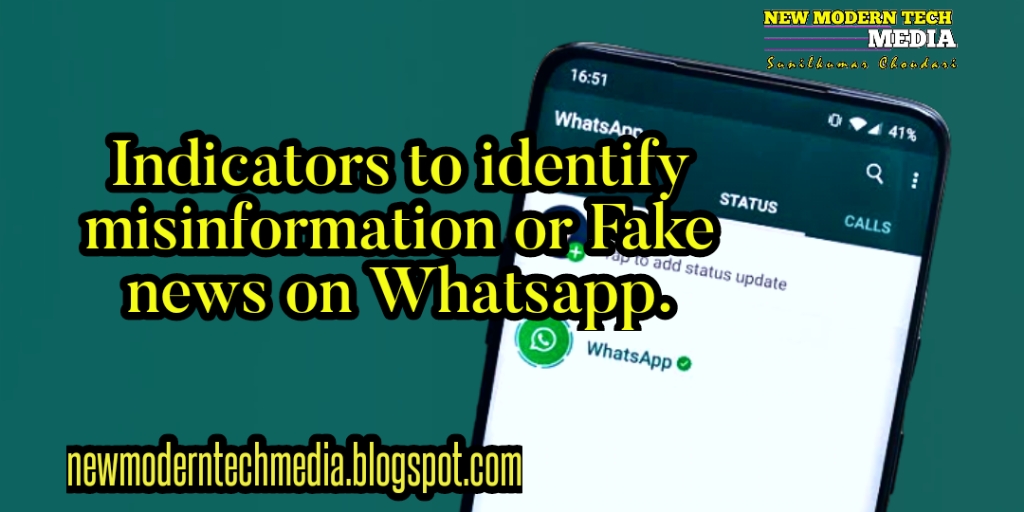Here are some easy indicators to identify misinformation or Fake news on Whatsapp. --Sunilkumar Choudari
The strategy is a simple one and revolves around the user. However, the greater responsibility in stopping misinformation is with the users. The massive userbase in India needs to understand that WhatsApp is an excellent tool for connecting with friends and family. What everyone needs to know is that not all messages shared on the app can be an authentic story. In this post, we discuss some easy ways how you can identify fake news.
Here are some easy indicators to identify fake news on Whatsapp.
Look for signs that the news might be fake
The first rule in identifying fake news or misinformation is to be careful with forwarded messages. There are specific indicators that are tagged, and you need to recognise. Like a forwarded message comes with "Forwarded" label on top of the message which is a good sign of understanding a message has been widely circulated.
Understand when a message is forwarded
A fundamental rule for "Forwarded" messages, always remember, a forwarded message is not created by the person who sent it. What do messages with the "Forwarded" label mean? When a message is forwarded from one user to another more than five times, it's indicated with a double arrow icon. If you're not sure who wrote the original message, double-check the facts with trusted news sources.
Check forwarded photos and media carefully
A lot of times, we receive photos, audio recordings, and videos that can be edited to mislead you. Look at trusted news sources to see if the story is being reported elsewhere.
Look out for messages that look different
Many messages or website links you receive containing hoaxes or fake news have spelling mistakes. Checking the content of the message is important as a lot of fake news stories come with facts that are misquoted or misinterpreted. Be extra cautious with such messages. Look for these signs so you can check if the information is accurate.
Watch out for messages that include misspellings or grammatical mistakes, ask you to tap on a link, ask you to share your personal information (like credit card and bank account numbers, birthdate, passwords, etc.), ask you to forward the message, ask you to click on a link to “activate” a new feature, and say that you have to pay to use WhatsApp.
Verify the messages with reliable sources
You can verify the message by searching for facts online before sharing it with your contacts. If you're still not sure if a message is valid. It's one of the best practices to verify if the message is real before forwarding it.
-By






